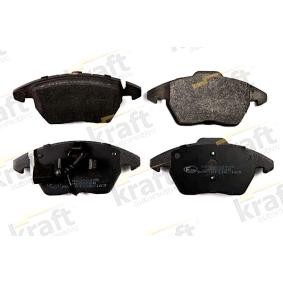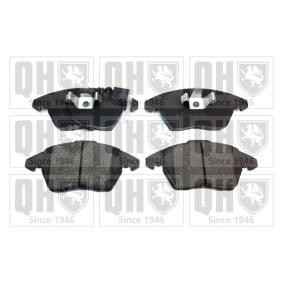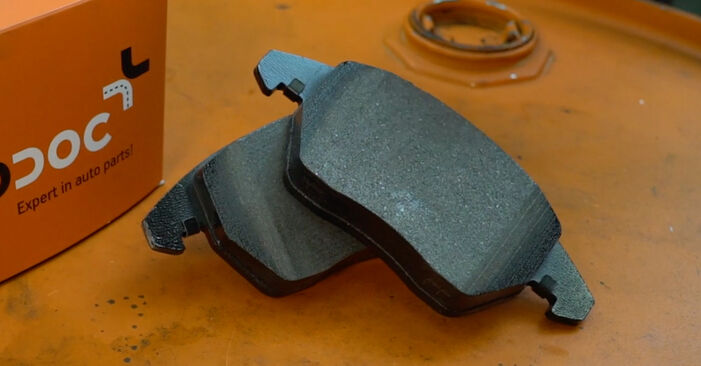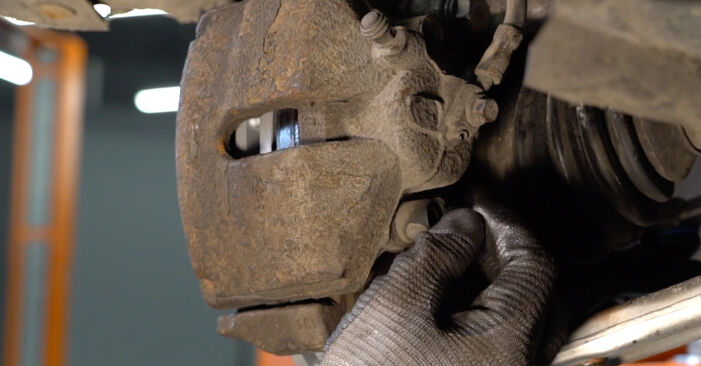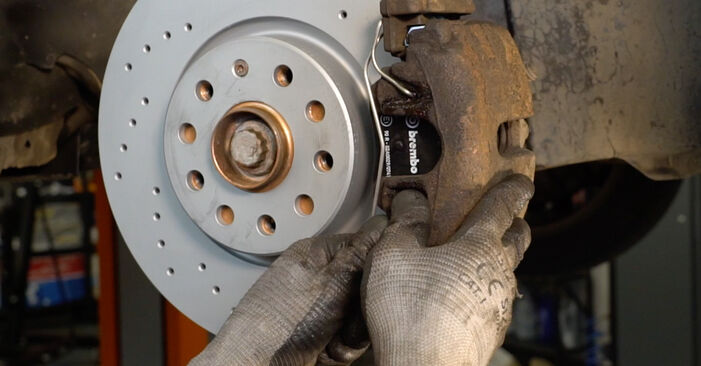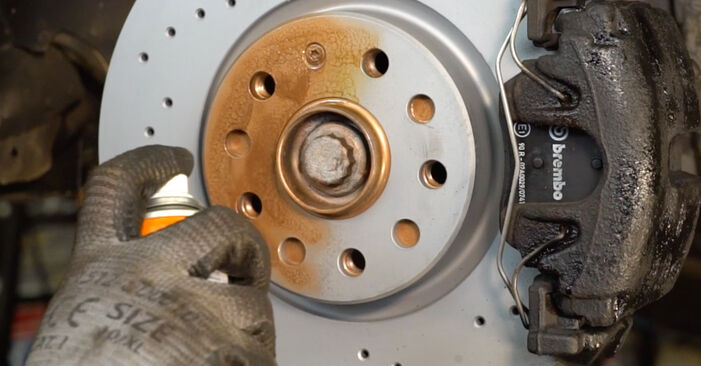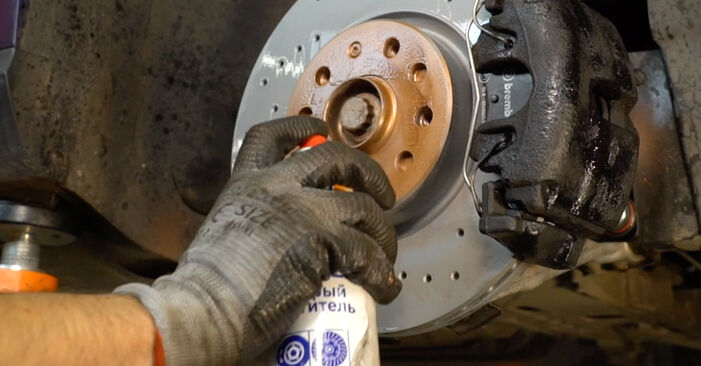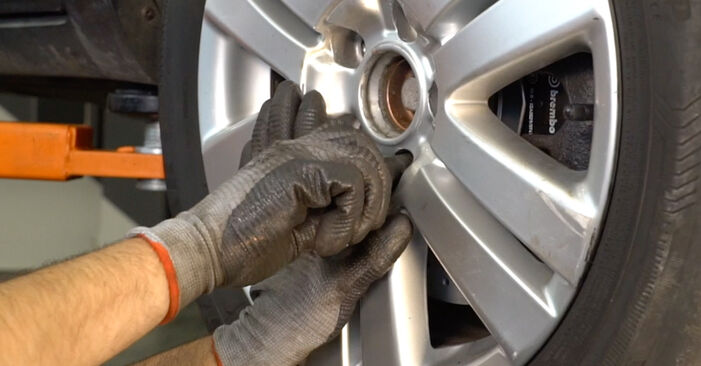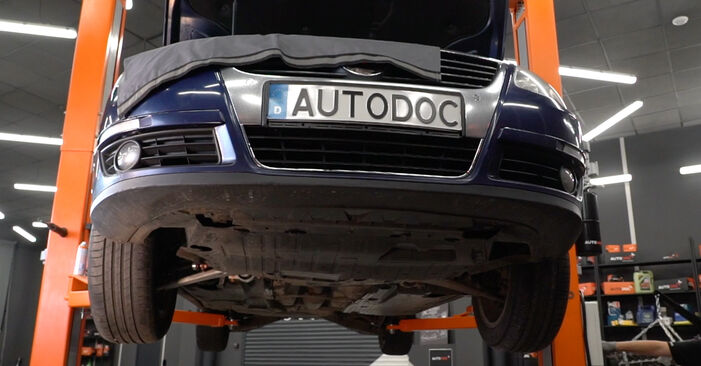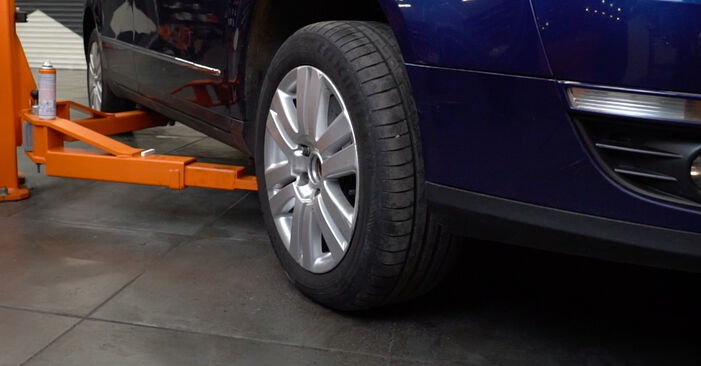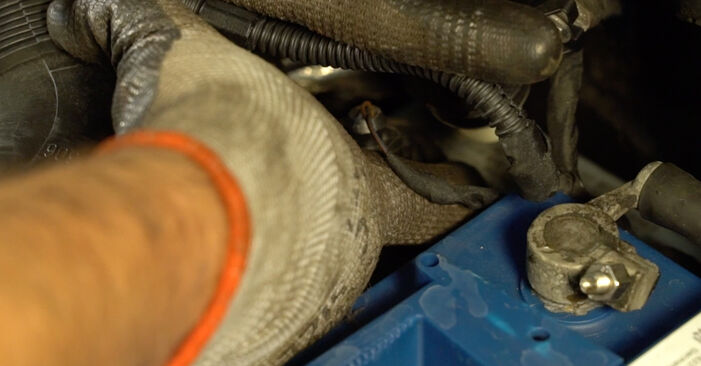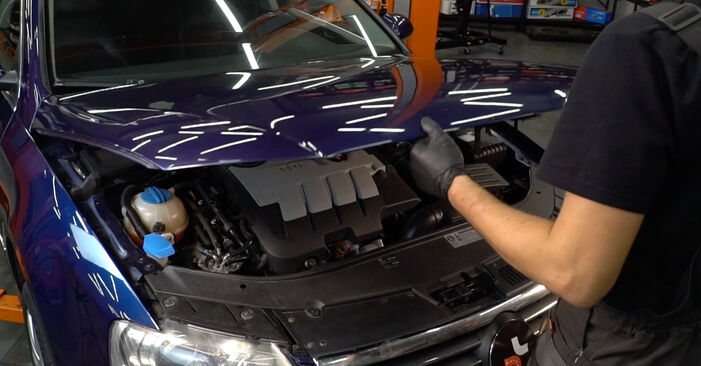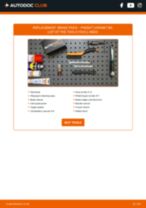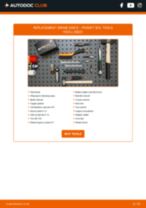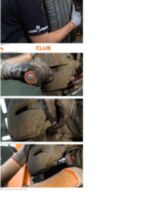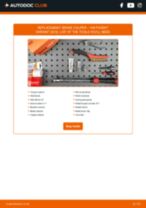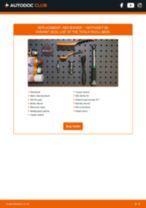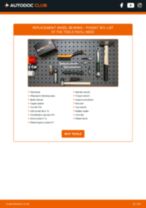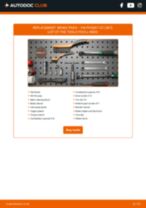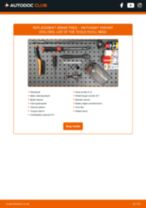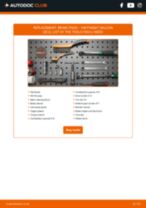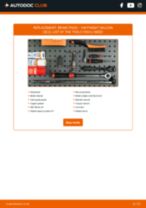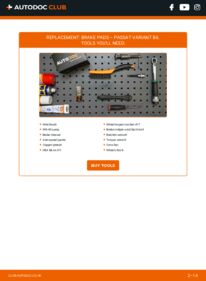
Disclaimer
How to change front brake pads on VW Passat 3C B6 Variant – replacement guide
downloads:
19
Views:
657
Recommended replacement interval for the part category Brake pad set : 30000 km
Important!
This replacement procedure can be used for:
VW Passat Variant (3C5) 2.0 TDI, VW Passat Variant (3C5) 1.6 FSI, VW Passat Variant (3C5) 2.0 FSI, VW Passat Variant (3C5) 1.9 TDI, VW Passat Variant (3C5) 2.0 TDI 16V, VW Passat Variant (3C5) 1.6, VW Passat Variant (3C5) 2.0 TDI, VW Passat Variant (3C5) 2.0 TDI, VW Passat Variant (3C5) 2.0 TDI, VW Passat Variant (3C5) 2.0 TFSI, VW Passat Variant (3C5) 2.0 TDI 16V 4motion, VW Passat Variant (3C5) 2.0 FSI 4motion, VW Passat Variant (3C5) 2.0 TDI 4motion, VW Passat Variant (3C5) 1.4 TSI, VW Passat Variant (3C5) 1.8 TSI, VW Passat Variant (3C5) 2.0 TDI, VW Passat Variant (3C5) 1.4 TSI EcoFuel, VW Passat Variant (3C5) 2.0 TDI, VW Passat Variant (3C5) 2.0 BlueTDI, VW Passat Variant (3C5) 1.6 TDI, VW Passat Variant (3C5) 2.0 TDI 4motion, VW Passat Variant (3C5) 1.8 TSI … View more
The steps may slightly vary depending on the car design.
VW Passat Variant (3C5) 2.0 TDI, VW Passat Variant (3C5) 1.6 FSI, VW Passat Variant (3C5) 2.0 FSI, VW Passat Variant (3C5) 1.9 TDI, VW Passat Variant (3C5) 2.0 TDI 16V, VW Passat Variant (3C5) 1.6, VW Passat Variant (3C5) 2.0 TDI, VW Passat Variant (3C5) 2.0 TDI, VW Passat Variant (3C5) 2.0 TDI, VW Passat Variant (3C5) 2.0 TFSI, VW Passat Variant (3C5) 2.0 TDI 16V 4motion, VW Passat Variant (3C5) 2.0 FSI 4motion, VW Passat Variant (3C5) 2.0 TDI 4motion, VW Passat Variant (3C5) 1.4 TSI, VW Passat Variant (3C5) 1.8 TSI, VW Passat Variant (3C5) 2.0 TDI, VW Passat Variant (3C5) 1.4 TSI EcoFuel, VW Passat Variant (3C5) 2.0 TDI, VW Passat Variant (3C5) 2.0 BlueTDI, VW Passat Variant (3C5) 1.6 TDI, VW Passat Variant (3C5) 2.0 TDI 4motion, VW Passat Variant (3C5) 1.8 TSI … View more
The steps may slightly vary depending on the car design.
How to change front brake pads / front brake pad set on VW PASSAT B6 (3C5) [TUTORIAL AUTODOC]

All the parts you need to replace – Brake Pads for Passat Variant (3C5) and other VW models
Alternative products

Wire brush
WD-40 spray
Brake cleaner
Anti-squeal paste
Copper grease
HEX bit no.H7.
Wheel impact socket #17
Brake caliper wind back tool
Ratchet wrench
Torque wrench
Crow bar
Wheel chock
Replacement: brake pads – VW Passat 3C5. Tip from AUTODOC experts:
- Perform the replacement of brake pads in complete set for each axis. This provides effective braking.
- The replacement procedure is identical for all brake pads on the same axle.
- Please note: all work on the car – Passat B6 3C Variant – should be done with the engine switched off.
Carry out replacement in the following order:
- Step 1
 Open the bonnet. Unscrew the brake fluid reservoir cap.
Open the bonnet. Unscrew the brake fluid reservoir cap. - Step 2
 Secure the wheels with chocks.
Secure the wheels with chocks. - Step 3
 Loosen the wheel mounting bolts. Use wheel impact socket #17.
Loosen the wheel mounting bolts. Use wheel impact socket #17. - Step 4
 Raise the front of the car and secure on supports.
Raise the front of the car and secure on supports. - Step 5
 Unscrew the wheel bolts.AUTODOC recommends:Warning! To avoid injury, hold the wheel while unscrewing the fastening bolts. Passat 3C5
Unscrew the wheel bolts.AUTODOC recommends:Warning! To avoid injury, hold the wheel while unscrewing the fastening bolts. Passat 3C5 - Step 6
 Remove the wheel.
Remove the wheel. - Step 7
 Spread the brake pads. Use a crowbar.
Spread the brake pads. Use a crowbar. - Step 8
 Remove the dust boot caps of the brake caliper guide pins. Use a crowbar.
Remove the dust boot caps of the brake caliper guide pins. Use a crowbar. - Step 9
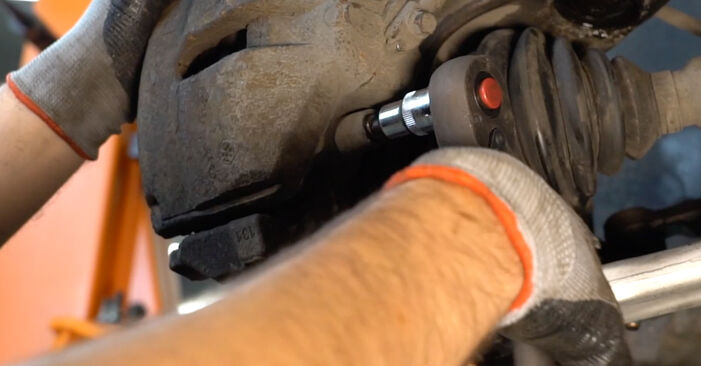 Unscrew the brake caliper fastening. Use HEX No.H7. Use a ratchet wrench.
Unscrew the brake caliper fastening. Use HEX No.H7. Use a ratchet wrench. - Step 10
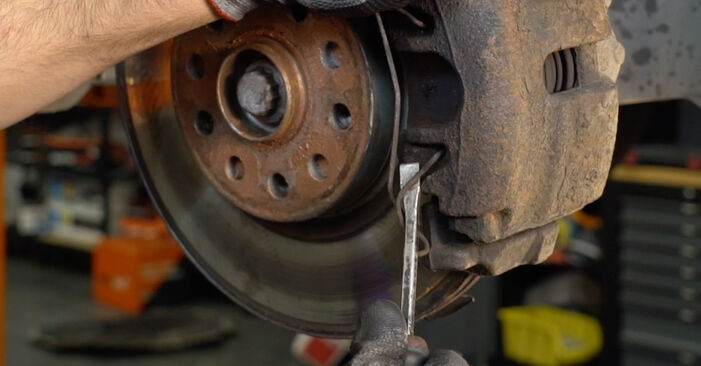 Detach the brake caliper retaining spring. Use a crowbar.
Detach the brake caliper retaining spring. Use a crowbar. - Step 11
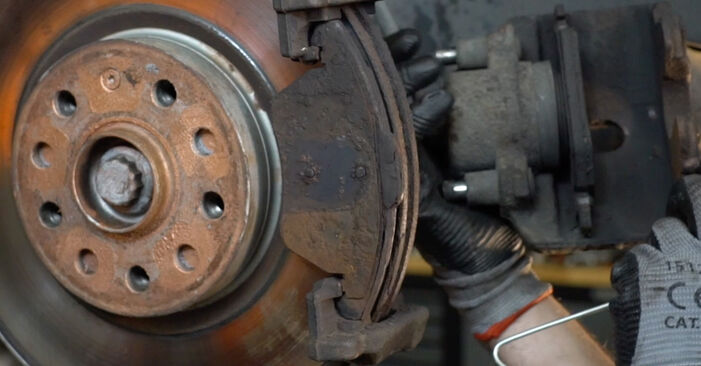 Remove the brake caliper.Replacement: brake pads – VW Passat Variant B6. Professionals recommend:Tie the caliper to the suspension or to the body with a wire without disconnecting from the brake hose to prevent depressurization of the brake system.Make sure that the brake caliper is not hanging on the brake hose.Don't press the brake pedal after the brake caliper has been removed. As a result, the piston can fall out from the brake cylinder, and brake fluid leakage and depressurization of the system may occur. Check the brake caliper bracket, brake caliper guide pins and boots. Clean them. Replace, if necessary.
Remove the brake caliper.Replacement: brake pads – VW Passat Variant B6. Professionals recommend:Tie the caliper to the suspension or to the body with a wire without disconnecting from the brake hose to prevent depressurization of the brake system.Make sure that the brake caliper is not hanging on the brake hose.Don't press the brake pedal after the brake caliper has been removed. As a result, the piston can fall out from the brake cylinder, and brake fluid leakage and depressurization of the system may occur. Check the brake caliper bracket, brake caliper guide pins and boots. Clean them. Replace, if necessary. - Step 12
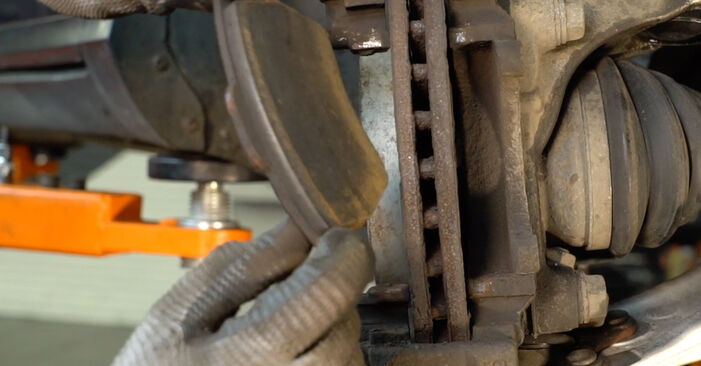 Remove the brake pads.AUTODOC recommends:Measure the brake disc thickness. Upon reaching the wear limit the part must be replaced.
Remove the brake pads.AUTODOC recommends:Measure the brake disc thickness. Upon reaching the wear limit the part must be replaced. - Step 13
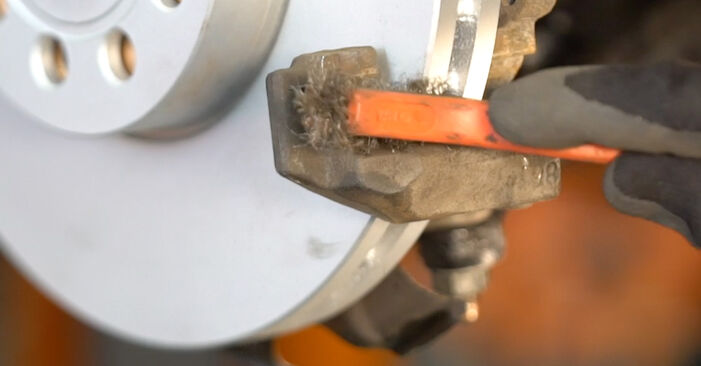 Clean the brake caliper bracket from dirt and dust. Use a wire brush. Use a brake cleaner.AUTODOC recommends:Replacement: brake pads – Passat B6 3C Variant. After applying the spray, wait a few minutes.
Clean the brake caliper bracket from dirt and dust. Use a wire brush. Use a brake cleaner.AUTODOC recommends:Replacement: brake pads – Passat B6 3C Variant. After applying the spray, wait a few minutes. - Step 14
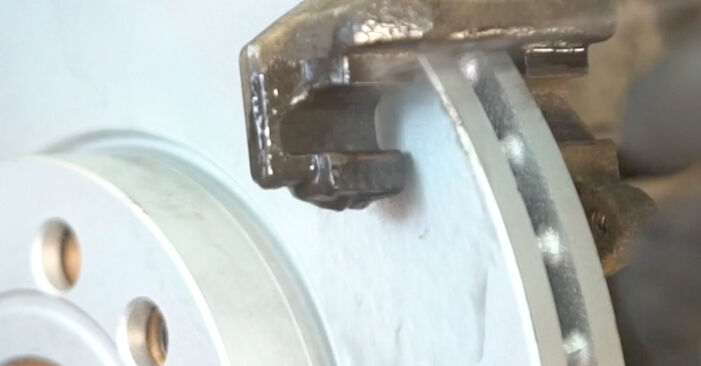 Treat the brake pads in the area where their surface comes into contact with the brake caliper bracket. Use anti-squeal paste.
Treat the brake pads in the area where their surface comes into contact with the brake caliper bracket. Use anti-squeal paste. - Step 15
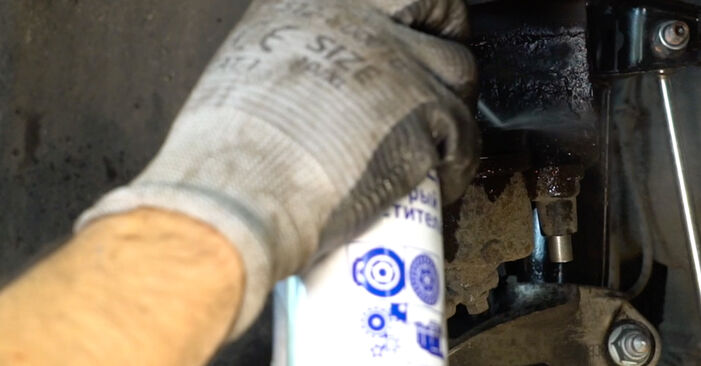 Treat the brake caliper piston. Use a brake cleaner.Replacement: brake pads – VW Passat 3C B6 Variant. AUTODOC recommends:After applying the spray, wait a few minutes.
Treat the brake caliper piston. Use a brake cleaner.Replacement: brake pads – VW Passat 3C B6 Variant. AUTODOC recommends:After applying the spray, wait a few minutes. - Step 16
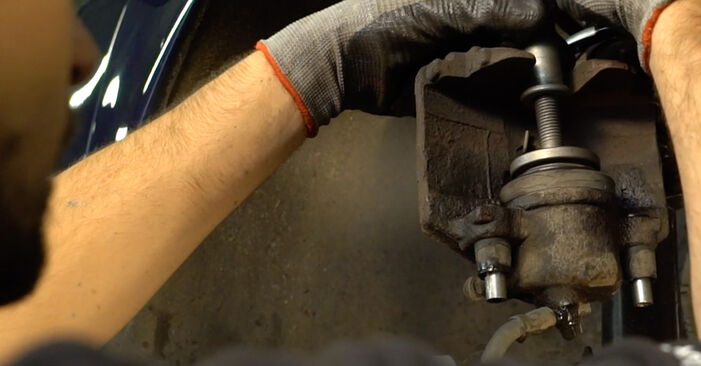 Press in the brake caliper piston. Use brake caliper wind back tool.Replacement: brake pads – VW Passat Variant B6. Tip:Make sure the disc surface is clean before installing the pads.
Press in the brake caliper piston. Use brake caliper wind back tool.Replacement: brake pads – VW Passat Variant B6. Tip:Make sure the disc surface is clean before installing the pads.
Was this manual helpful?
Please rate this manual on a scale from 1 to 5. If you have any questions, feel free to ask us.
Users voted – 0
Need New Tyres?
Find out which tyre and wheel sizes are compatible with the VW Passat B6 Variant (3C5) model

Popular maintenance tutorials for Passat B6 Variant
Complete guides for changing the Brake pad set on different VW PASSAT models
Unlock your car maintenance assistant!
Track expenses, manage logs, schedule replacements, and more.
Tips & tricks for your VW Passat Variant (3C5)
View more
 Top 5 car noises you shouldn't ignore
Top 5 car noises you shouldn't ignore TOP 6 WD-40 lifehacks | AUTODOC tips
TOP 6 WD-40 lifehacks | AUTODOC tips How to replace a timing chain yourself
How to replace a timing chain yourself Top 5 reasons why the suspension knocks | AUTODOC tips
Top 5 reasons why the suspension knocks | AUTODOC tips
Most commonly replaced car parts on VW PASSAT

Time to replace parts? Get even better deals in our Shop app.

SCAN ME





